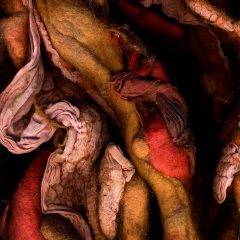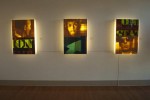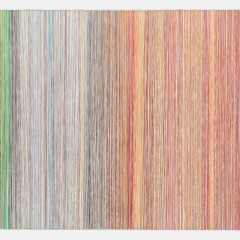Candy Depew’s new installation at the Design Center feels like an escapist fantasy. The radically altered black bicycle in the entry hall becomes the perfect vehicle on which to hit the road and not look back.
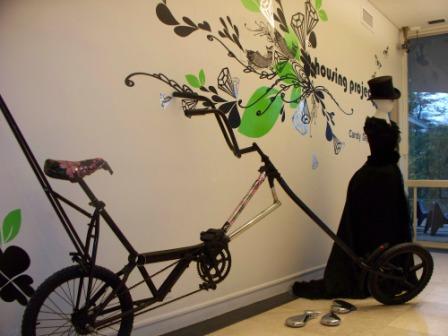
The rest of the show offers the luxuriant comforts of printed pillows and fabrics, and rich jewel encrusted sculptures. A diamond, fish, and swirl pattern of cut vinyl decorates the walls and is repeated on these printed fabrics and on the beautiful, old-fashioned looking dresses designed by Depew that are included here.
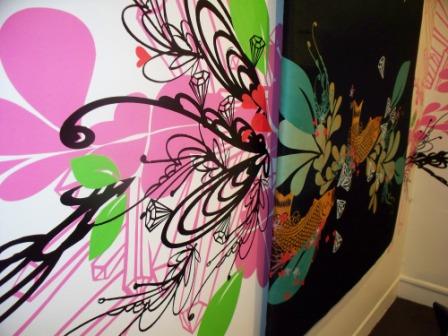
In these belt-tightened times, these layered, repeating, and shiny decorations form a lush oasis.
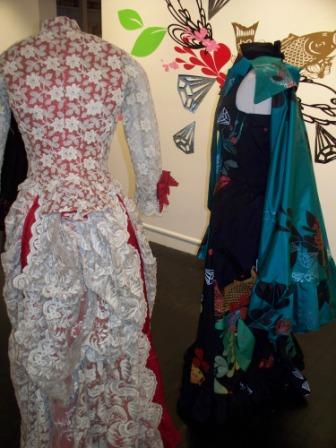
A great thing about seeing shows at the Design Center is getting to see how an artist interacts with the Center’s amazing collection of textiles and costumes. Depew’s solutions are enchanting.
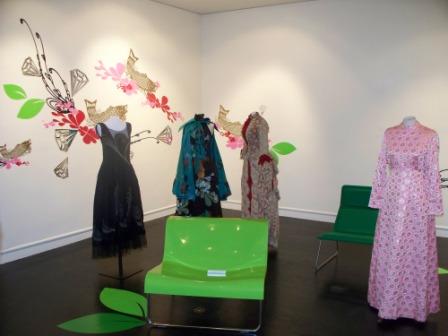
In the final room, mannequins in Depew’s dresses are grouped in conversation with others wearing dresses from the collection. The conversation among the “women” in this “speak-easy salon” is one about a contemporary artist taking on the history here. Depew recreates the feel of historical garments with bustles, flounces, and capes.
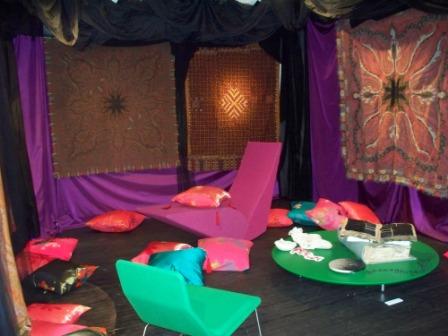
There’s a lot of softness in Depew’s installation: ball gowns, pillows, extra-long quilts, billowing fabrics, and arabesque swirls. All of it softens the hard-edged aesthetic of this mid-century modern house that the Design Center calls home, and reinforces the allure of some suggested leisurely respite. Here and there are sparkly, intricate, confectionary sculptures that catch your eye and draw you in.
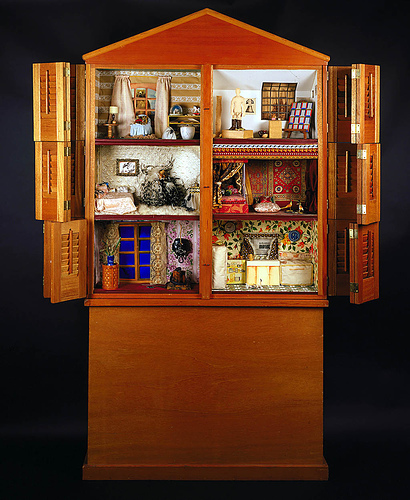
My favorite room in the show is the Opium den, which immediately made me think of Miriam Schapiro’s Seraglio room from her Dollhouse, and also of Matisse’s exotic interiors. The room is festooned with airy fabrics and hung all around with antique paisley shawls. Depew’s shimmering pillows printed with the diamond and fish motif cover the floor, and a large, modern chaise lounge awaits an Odalisque. Schapiro’s Pattern and Decoration movement of the 1970s countered Minimalism with elaborate, layered ornamentation. In these spare and stripped-down times, Depew’s interiors may suggest something similar: a refuge of riches can be found in art, if not in real life.
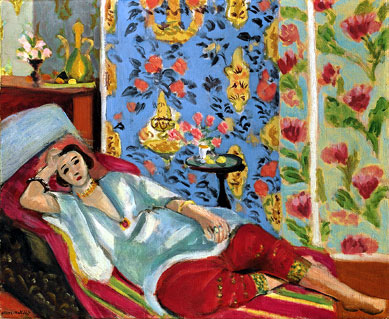
After seeing Depew’s “Housing Project” show at the Design Center I had the occasion to go to Park Towne Place apartments and was surprised to see the same, computer-cut vinyl fish and diamond wall murals in the lobby. It turns out that Park Towne Place has installed the work of several local artists in their new lobby spaces.
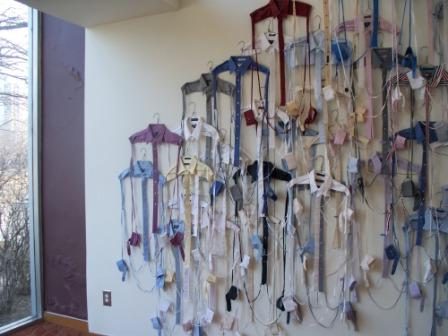
Curated by Jocelyn Firth and Rachel Zimmerman, the new lobbies now house the work of: Ian Baguskus, Candy Depew, Kate Kaman, Mark Khaisman, Craig Matthews, Leslie Mutchler, Leah Reynolds, Libbie Soffer, Shelley Spector, and Sarah Zwerling. Usually, apartment building lobbies are decorated with predictable framed art. But here, it’s a joy to see the work of local artists interacting with the marble, tile, and glass spaces. The art here seems to enliven and rouse the lobbies, not just decorate them.
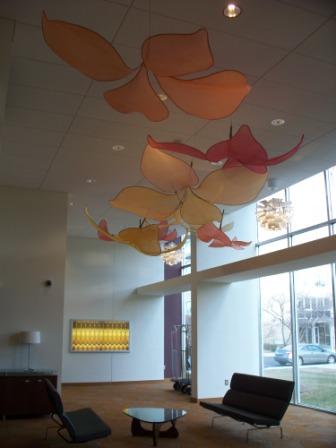
The installations are not fully complete; Shelley Spector’s work will be installed in the spring, for example. Zimmerman noted that having some new art on the Parkway “relates to both the museums and to the contemporary art scene of the city which is good for the large population of students who live in Park Towne Place.” Luckily, most of the project was paid for before budget cuts at the apartments stopped the inclusion of a sculpture garden which was part of the original vision. Sometime in May, the curators hope to organize an opening and a talk in order to engage residents and the public. Stay tuned.



